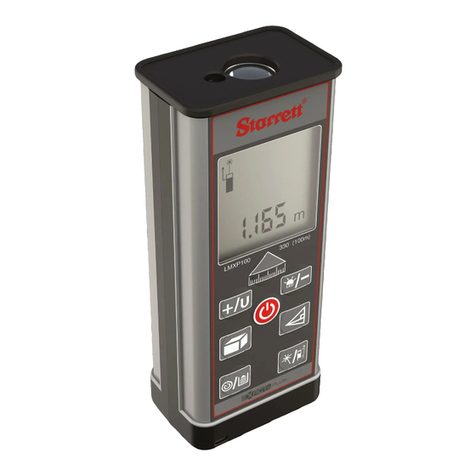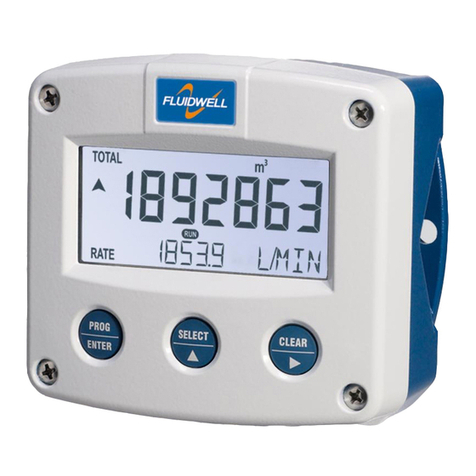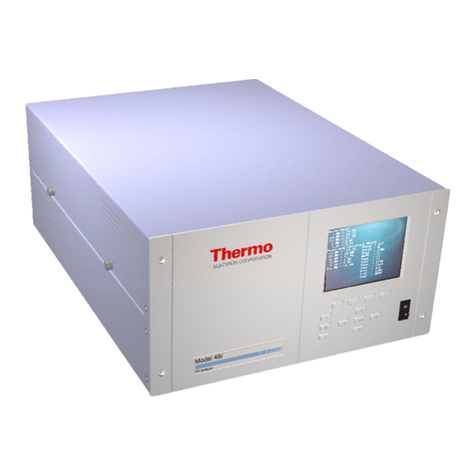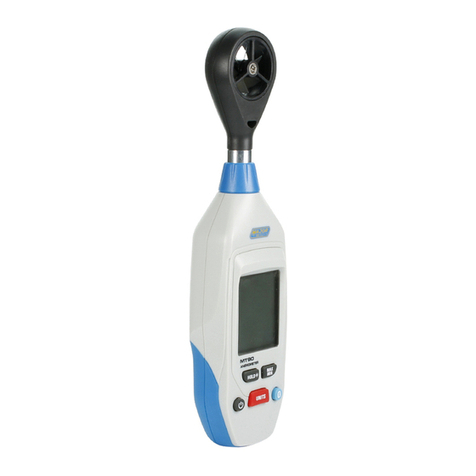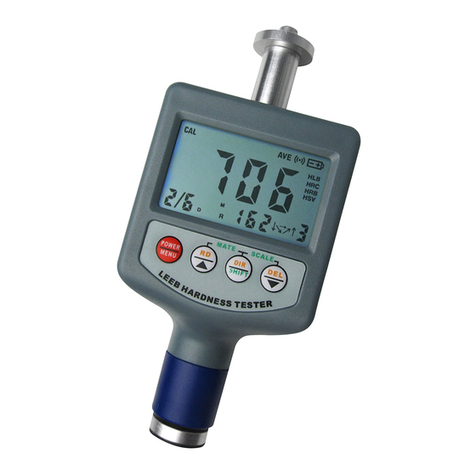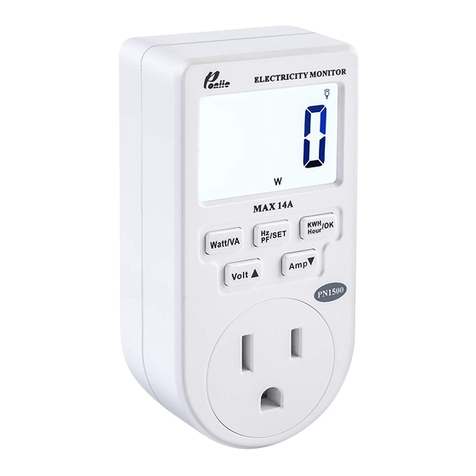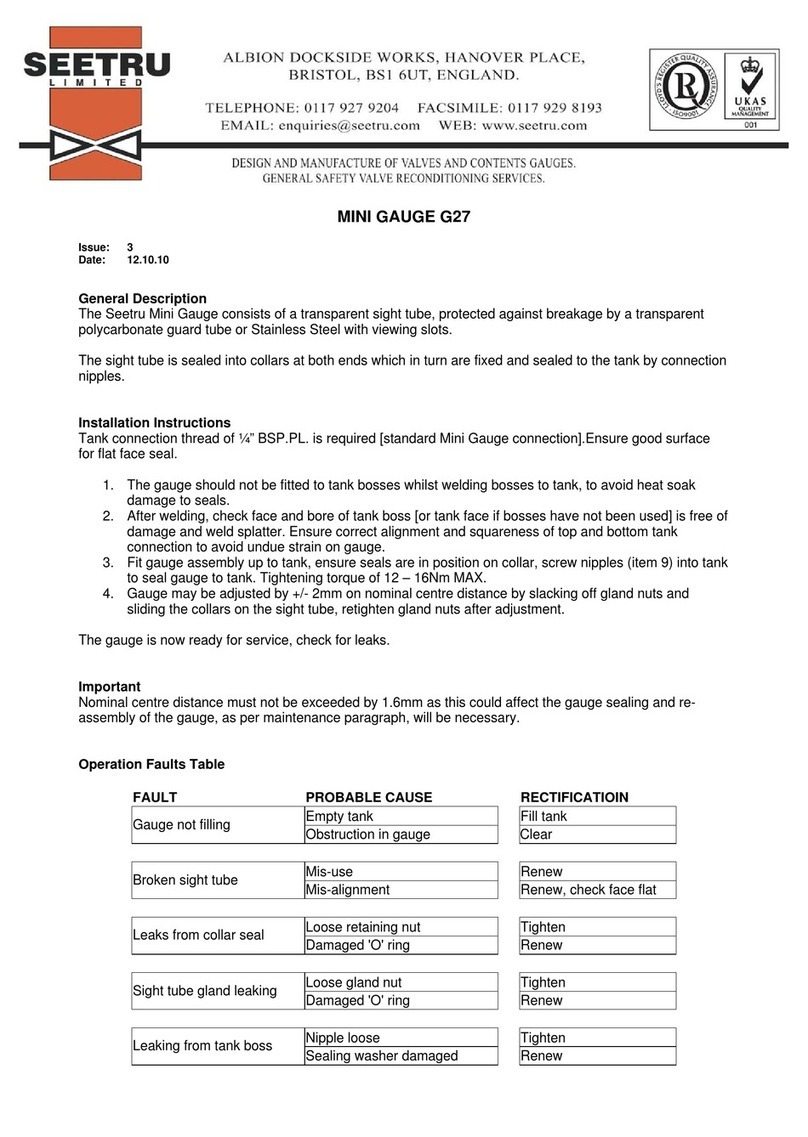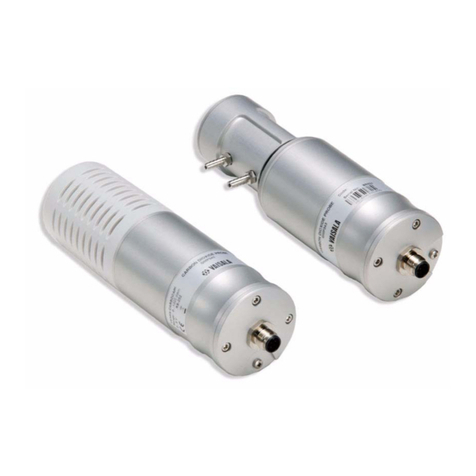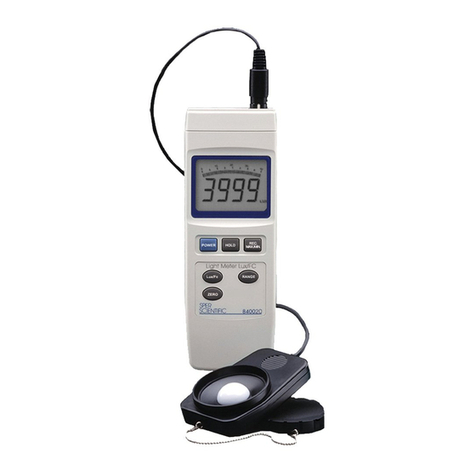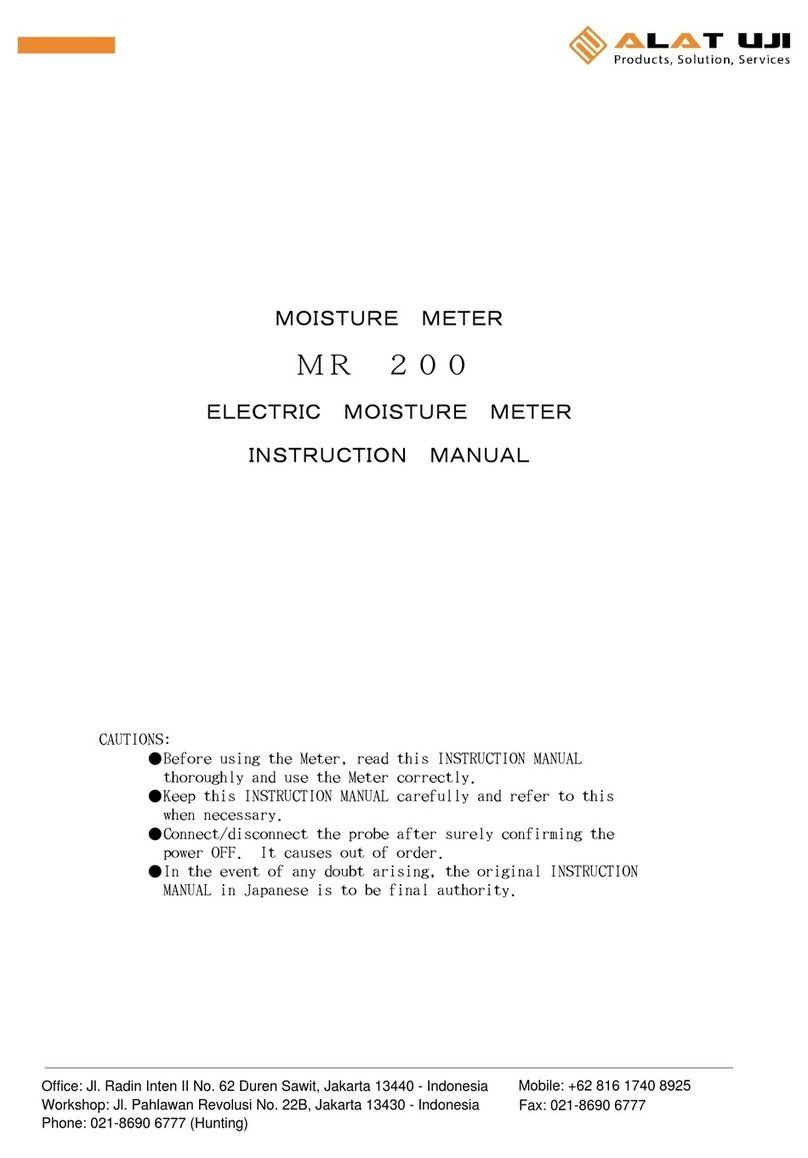Tosok CAG2000 User manual

Contents
1. Introduction・・・・・・・・・・・・・・・・・・・・・・・・・・・・・・・・・・・・・・・・・・・・・・・・・・・・ 1
2. Main Features・・・・・・・・・・・・・・・・・・・・・・・・・・・・・・・・・・・・・・・・・・・・・・・・・ 1
3. Main Modes ・・・・・・・・・・・・・・・・・・・・・・・・・・・・・・・・・・・・・・・・・・・・・・・・・・・ 2
4. Names and Functions of Controls and Parts ・・・・・・・・・・・・・・・・・・・・・・・ 3
5. Specifications・・・・・・・・・・・・・・・・・・・・・・・・・・・・・・・・・・・・・・・・・・・・・・・・・・ 8
6. Measurement ・・・・・・・・・・・・・・・・・・・・・・・・・・・・・・・・・・・・・・・・・・・・・・・・・・10
6.1 Preparation ・・・・・・・・・・・・・・・・・・・・・・・・・・・・・・・・・・・・・・・・・・・・・・・・10
6.2 Measuring ・・・・・・・・・・・・・・・・・・・・・・・・・・・・・・・・・・・・・・・・・・・・・・・・・10
7. Mastering ・・・・・・・・・・・・・・・・・・・・・・・・・・・・・・・・・・・・・・・・・・・・・・・・・・・・・12
7.1 Automatic mastering ・・・・・・・・・・・・・・・・・・・・・・・・・・・・・・・・・・・・・・・・12
7.2 Clearing mastering data ・・・・・・・・・・・・・・・・・・・・・・・・・・・・・・・・・・・・・15
8. Changing Programs ・・・・・・・・・・・・・・・・・・・・・・・・・・・・・・・・・・・・・・・・・・・・16
9. Setting ・・・・・・・・・・・・・・・・・・・・・・・・・・・・・・・・・・・・・・・・・・・・・・・・・・・・・・・・18
10. Adjusting Zero Position and Sensitivity with Zero and
Sensitivity
Adjustment Knobs・・・・・・・・・・・・・・・・・・・・・・・・・・・・・・・・・・・・27
10.1 Adjusting ・・・・・・・・・・・・・・・・・・・・・・・・・・・・・・・・・・・・・・・・・・・・・・・・・27
10.2 Indication below mastering range ・・・・・・・・・・・・・・・・・・・・・・・・・・・・31
10.3 Indication above mastering range ・・・・・・・・・・・・・・・・・・・・・・・・・・・・32
11. I/O Description ・・・・・・・・・・・・・・・・・・・・・・・・・・・・・・・・・・・・・・・・・・・・・・・・34
11.1 Serial output (RS232C) ・・・・・・・・・・・・・・・・・・・・・・・・・・・・・・・・・・・・・34
11.2 External input ・・・・・・・・・・・・・・・・・・・・・・・・・・・・・・・・・・・・・・・・・・・・・39
12. Model Identification・・・・・・・・・・・・・・・・・・・・・・・・・・・・・・・・・・・・・・・・・・・・41
13. Options・・・・・・・・・・・・・・・・・・・・・・・・・・・・・・・・・・・・・・・・・・・・・・・・・・・・・・42
14. Maintenance ・・・・・・・・・・・・・・・・・・・・・・・・・・・・・・・・・・・・・・・・・・・・・・・・・43
15. Troubleshooting・・・・・・・・・・・・・・・・・・・・・・・・・・・・・・・・・・・・・・・・・・・・・・・44
16. Cautions ・・・・・・・・・・・・・・・・・・・・・・・・・・・・・・・・・・・・・・・・・・・・・・・・・・・・・45
17. Operation Flow ・・・・・・・・・・・・・・・・・・・・・・・・・・・・・・・・・・・・・・・・・・・・・・・46

1
1. Introduction
The column type air micrometer is a measuring instrument with an easy-to-see three-
color bargraph display. Combination with an air/electric (A/E) converter provides this
compact instrument with an automatic mastering function. It can also be easily
connected with another or more identical units to allow the trend of works to be read from
the bargraph displays arranged side by side.
2. Main Features
(1) A three-color bargraph display allows the measurement result to be more easily
seen.
(2) An eight-digit alphanumeric display indicates the measured value, set item, and other
types of information.
(3) Control keys are used to automatically calibrate the instrument with the maximum
and minimum masters.
(4) The instrument is only 50 mm wide, so that it is suited for measuring with another or
more identical units operating together.
(5) The standard serial communication function allows the output of data to the personal
computer and printer. The data can be stored, statistically processed, and input to a
spreadsheet program like Excel.
(6) In the set mode, the ENT key can be pressed to sequentially select all items.
(7) Programs can be selected to store ten types of set values and mastering data and
change from one type to another.

2
3. Main Modes
The instrument operates in the following four main modes:
(1) Measure mode
Measure (in free run condition): Measures a work.
Hold measured value: Holds the measured value, except when the
mastering result is NG.
(2) Set mode
Enters and changes the set value.
(3) Master mode
Master: Calibrates the instrument with the masters. This
instrument is a comparative measuring instrument.
Be sure to use it upon completion of the mastering
operation.
Adjust detector: Adjusts the detector.
Clear mastering data: Clears the mastering data.
(4) Change program mode
Changes from one program to another. When the instrument is started, the
program used last is launched.

3
4. Names and Functions of Controls and Parts
(1) Bargraph display
Indicates the measured value, judgment result, or other
types of information by a 101-dot, 3-color bar.
Table 4-1. Relationship between bar color and display description in
each mode.
Mode Bar color Display description
Green (light) Measured value (judgment
result OK)
Red (light) Measured value (judgment
result NG)
Measure
Orange (dot) Upper or lower limit value
Green (dark) Measured value (judgment
result OK)
Hold measured value
Red (dark) Measured value (judgment
result NG)
Orange (light) Current set valueSet
Green (dot) Previous set value
Green (light) Mastering enabled condition
Red (light) Mastering disabled condition
Master
Orange (dot) Mastering data
Orange (light) Measured valueAdjust detector
Green (dot) Mastering data
(2) Range displays
Indicate the bar top and bottom dimensions in two digits.
Table 4-2. Range displays.
Measuring range (µm) Digital display
20 10.
50 25.
100 50.
200 10
2
1
3
SET MAS
(1)
(2)

4
(3) Alphanumeric display
Indicates the measured value, set value, set item, or other
types of information by 8-digit 7 ×5 dot characters.
(4) Sensitivity adjustment knob
Adjusts the sensitivity of the air circuit. This adjustment is
necessary only for changing the measuring nozzle and
correcting a mastering error.
(5) Zero adjustment knob
Adjusts the zero position of the air circuit. This adjustment
is necessary only for changing the measuring nozzle and
correcting a mastering error.
(6) Measuring nozzle port
Accepts the vinyl hose of the measuring nozzle.
(7) Item and judgment LEDs
Indicate the judgment result. LED 1 comes on red when the
measured value is –NG, LED 2 comes on green when the
measured value is OK, and LED 3 comes on red when the
measured value is +NG.
Table 4-3. LED colors and conditions indicated.
Color Condition Mode
LED 1: Red (light) Judgment result –NG Measure
LED 2: Green (light) Judgment result OK Measure
LED 3: Red (light) Judgment result +NG Measure
LED 1: Red (dark) Judgment result –NG Hold measured value
LED 2: Green (dark) Judgment result OK Hold measured value
LED 3: Red (dark) Judgment result +NG Hold measured value
LED 1: Orange (light) Mastering Master
ZERO
MAG
GAGE
S
E
T
M
A
S
ENT
RST
SET MAS
CAG
2000
(3)
(4)
(5)
(6)
21 3
SET MAS
(7)

5
(8) Mode LEDs
Indicate the current mode and the mastering result. The
relationship between the LED color and the mode or mastering
result is as shown in Table 4-4.
Table 4-4. LED colors and conditions indicated.
LED name LED color Mode or condition
Orange Set modeSET
Green Change program mode
Orange Master mode
Flashing red Mastering result NG
MAS
Alternately red and orange Master mode,
Mastering result NG
(9) Control keys
Left arrow key
Mode Keying Condition
Measure Press 2 sec. Mode is changed to set mode.
Set Press once. Set item can be selected.
Right arrow key
Mode Keying Condition
Measure Press 2 sec. Mode is changed to master mode.
Set Press once. Set item can be selected.
Master Press once. Display description is changed.
RST (reset) key
Mode Keying Condition
Hold measured
value
Press once. Measured value hold is cleared.
Set (set value
being entered)
Press once. Set value is returned to previous
condition.
Set (set item
being selected)
Press once. Setting can be finished (WRITE or
CANCEL).
Master Press once. Display description is returned to
previous condition.
Adjust detector Press once. Display description is returned to
previous condition.
21 3
SET MAS
(8)
ENT
RST
SET MAS

6
EXT I/O
FUSE
3A
AC85~264V
3
2C
ENT (enter) key
Mode Keying Condition
Measure Press once. Measured value is held (when
mastering result is OK).
Set Press once. Set item and value are determined.
Master Press once. Master measured value is read.
Adjust
detector
Press once. Detector adjustment is finished.
Up arrow key
Mode Keying Condition
Set Press once. Set value is entered.
Down arrow key
Mode Keying Condition
Measure Press 2 sec. Mode is changed to change
program mode.
Set Press once. Set value is entered.
(10) Power connector (input) and power switch
Input AC power. Usable in the range of 85 to 264 VAC. Use
the accessory power cable in the range of 85 to 125 VAC.
(11) Power connector (output)
Accepts the power connector (input) of an adjacent instrument to
be used in combination, and is internally connected to the power
connector (input).
(12) Fuse holder
A glass tube fuse (φ5.2 ×20, 3 A) is used.
(13) DC input/output connector (option)
Connector to be connected to an LED or sequencer, and used
for input of measure, mastering and other commands and for
output of judgment result and BCD.
ENT
RST
SET MAS
(10)
(11)
(12)
(13)

7
EXT I/RS232CSW.ETCANALOG
(14) RS232C connector
A serial communication connector for connecting a personal
computer or printer.
(15) Switch input connector
A connector for input of a measure or mastering command with
an external button. It is also used for RS422 communication
and Digimatic output (options).
(16) Analog input/output connector
A connector for external analog signal input and amplifier signal
output.
(14)
(15)
(16)

8
5. Specifications
Item Specification Remarks
Input 1 air channel
Air supply pressure 0.196 MPa Source pressure:
0.3 MPa or more
Measurement item 1
CAG2000 0.0200, 0.0500, 0.100, 0.200
CAG2000E 0.0250, 0.0500, 0.100, 0.200
Measuring range (mm)
CAG2000H 0.0100, 0.0200, 0.0500, 0.1000
CAG2000 0.0002, 0.0005, 0.001, 0.002
CAG2000E 0.00025, 0.0005, 0.001, 0.002
Resolution (mm)
CAG2000H 0.0001, 0.0002, 0.0005, 0.0010
Bargraph display 101 dots (red, green, orange, light/dark)
Bargraph display
method
Bar (OK: Green, NG: Red), Dots (Max/Min)
Range display 2 digits (numbers), 2 places
Multifunctional display 8 digits (numbers/alphabet)
Measured value, set item, set value, and
error display
Shift range ±1000% (full scale) From Version 2.60
Actual dimension
display
000.0000 mm (7 digits + decimal point)
Judgment result ±NG and OK
Judgment result
display
Bargraph display (color), judgment LEDs
Multifunctional display
Automatic mastering Minimum and maximum masters
Automatic mastering
range
Zero position: ±50% (full scale)
Sensitivity: ±20% (full scale)
Number of setting
programs
10
Power supply voltage
and frequency
85 to 264 VAC, 50/60 Hz 100-VAC power cable
supplied as accessory
Power supply capacity 30 VA
Dimensions and mass 50 mm wide ×480 mm high ×200 mm deep,
4 kg
Operating temperature 0 to 45°C

9
Item Specification Remarks
Standard
External input 4 (measure, reset, maximum master, and
minimum master)
External buttons or foot
switch
Serial output 1 (printer or personal computer) RS232C
Optional
Printer output 1 (DP1) Digimatic
Judgment result output –NG, OK, +NG (12/24 VDC)
Rank output –NG,OK1 to OK14, +NG (12/24 VDC) Rank function
combined use
BCD output 1 (12/24 VDC)
Peak measurement
function
+PEAK, –PEAK,
TIR (= +PEAK – (–PEAK)),
TIR (= +PEAK – (–PEAK) /2)
Based on
measurement value
change with auto
measurement start
function
Rank function 99 ranks maximum OK range

10
6. Measurement
6.1 Preparation
Attach the regulator to the rear of the instrument, and connect it with the air filter.
Connect the measuring nozzle hose to the front of the instrument, and connect the
accessory power cable to the rear of the instrument.
Turn on the power switch (or press the position marked Iof the switch) at the rear of
the instrument, so that the power of 85 to 264 VAC (50/60 Hz) will be supplied to the
instrument. Supply air at 0.3 to 0.7 MPa to the air filter.
When the instrument is started, it is in the measure mode. Press for 2 sec to
change to the master mode, for 2 sec to change to the set mode, and for 2
sec to change to the change program mode.
6.2 Measuring
Bargraph display, and item and judgment LEDs
(1) The judgment upper and lower limit values are indicated by orange (dark) on the
bargraph display.
(2) The bargraph display is illuminated green (light) and red (light) when the judgment
result is OK and NG, respectively.
(3) The item and judgment LEDs 1, 2 and 3 come on red, green and red when the
measured value is –NG, OK and +NG, respectively.
Fig. 6-1. Item and judgment LEDs during measurement.
21
3
SET MAS
Comes on green when
measured value is OK
Comes on red when
measured value is +NG
Comes on red when
measured value is –NG

11
Hold measured value mode
The measured value is held, except when the mastering result is NG.
(1) The bargraph display is usually in the measure mode and shows the value being
measured (this is called the free run condition). In the free run condition, the
measured value is indicated by green (light) on the bargraph display when it is OK
and by red (light) on the bargraph display when it is NG.
(2) Press in the free run condition to hold the measured value (this is called the
hold condition). In the hold condition, the measured value is indicated by green
(dark) on the bargraph display when it is OK and by red (dark) on the bargraph
display when it is NG.
(3) Press to clear the measured value hold.

12
7. Mastering
7.1 Automatic mastering
In the measure mode, press for 2 sec or more.
The MAS LED below the bargraph display comes on orange, “MIN M.” appears on the
alphanumeric display, and the instrument changes to the master mode.
Fig. 7-1. Changing to master mode.
Set the minimum master in the measuring nozzle, and press . The instrument is
calibrated with the minimum master, and “MAX M.” is shown on the alphanumeric
display.
Fig. 7-2. Calibrating with minimum master.
2
1
3
SET
MAS
ENT
RST
SET MAS
2
1
3
SET
MAS
ENT
RST
SET MAS
12.3 MIN M.
Press 2 sec or
more
ENT
RST
SET MAS
ENT
RST
SET MAS
Set minimum master in
measuring nozzle, and
press this
MAX M.
Completion of
minimum-mastering
Measure mode Master mode

13
Set the maximum master in the measuring nozzle, and press . The instrument
is calibrated with the maximum master. If there is no mastering error, “MAS OK” is
shown for 2 sec on the alphanumeric display, and the instrument ends the master
mode and returns to the measure mode.
Fig. 7-3. Ending mastering.
If there is a mastering error, its description is shown on the alphanumeric display as
follows:
ERR ZERO: Zero position error (outside of automatic mastering range)
ERR MAG: Sensitivity error (outside of automatic mastering range)
ERR REV: Maximum and minimum master values reversed
ERR OFFR: Outside of measuring range
Press to return to step above. If it is necessary to adjust the zero position
and sensitivity of the air circuit with the zero and sensitivity adjustment knobs,
respectively, refer to “10. Adjusting Zero Position and Sensitivity with Zero and
Sensitivity Adjustment Knobs”.
In the middle of the master mode, press to return to the previous condition.
When “MIN M.” is displayed, press to return to the measure mode.
Mastering data storing function
The instrument is designed to read the last mastering data and fall in the master request
condition.
(1) Master request condition
When the power of the instrument is turned on or when a program change is made,
the instrument operates as follows:
ENT
RST
SET MAS
Mastering finished
ENT
RST
SET MAS
Set maximum master in
measuring nozzle, and
press this
MAS OK

14
Flashing of MAS LED
The MAS LED flashes orange to indicate that the last mastering data is effective
for the currently selected program and flashes red to indicate that the last
mastering data is not effective for the currently selected program (or the mastering
data is cleared).
Indication on alphanumeric display
“MAS REQ” is shown on the alphanumeric display.
Judgment result output signal (when judgment result output option is added)
The judgment result output signal “MAS OK” is turned off.
Fig. 7-4. Master request condition.
(2) Procedure for coping with master request condition
Calibrate the instrument with the masters.
When the MAS LED is flashing orange, the mastering operation can be omitted by
any of steps to below.
Press one of the control keys.
Input a reset command from an external signal or with an external button.
Input a clear master request command through the serial communication
(RS232C). (Refer to “11.1 Serial output”.)
These steps to clear the condition described in in (1) above when the MAS
LED is flashing red, and clear the conditions described in to in (1) above when
the MAS LED is flashing orange.
2
1
3
SET
MAS
ENT
RST
SET MAS
MAS REQ

15
7.2 Clearing mastering data
In the measure mode, press for 2 sec or more.
When the MAS LED below the bargraph display is turned on and “MAX M.” or
“MIN M.” is shown on the alphanumeric display (refer to Fig. 7-1), press to
change to the adjust detector mode and show “ADJ.” on the alphanumeric display.
Press to change to the clear mastering data mode and show “MAST CLS”
on the alphanumeric display.
Press to clear the mastering data, show “M. CLS OK” on the alphanumeric
display, and return to the master mode.
Fig. 7-5. Clearing mastering data.
2
1
3
SET
MAS
ENT
RST
SET MAS
2
1
3
SET
MAS
ENT
RST
SET MAS
ADJ.
Press
2
1
3
SET
MAS
ENT
RST
SET MAS
MAST CLS
Press
M .CLS OK

16
8. Changing Programs
In the measure mode, press for 2 sec or more.
The SET LED below the bargraph display comes on green, “PROG” appears on
the alphanumeric display, and the instrument changes to the change program
mode.
Fig. 8-1. Changing to change program mode.
With “PROG” shown on the alphanumeric display, press . The current
program number is shown on the alphanumeric display.
Fig. 8-2. Display of current program number.
2
1
3
SET
MAS
ENT
RST
SET MAS
PROG
2
1
3
SET
MAS
ENT
RST
SET MAS
10.0
Press 2 sec
or more
Measure mode Change program mode
2
1
3
SET
MAS
ENT
RST
SET MAS
PROG
2
1
3
SET
MAS
ENT
RST
SET MAS
2
Press

17
Press or toselectthenumber of the program to be used, and press
to determine the selection. The instrument ends the change program mode
and returns to the measure mode.
Fig. 8-3. Selecting and determining program number.
XA program number change calls for mastering. A measuring nozzle change may
call for the zero position and sensitivity of the air circuit to be adjusted with the zero
and sensitivity adjustment knobs, respectively.
XWhen setting any item, select the number of the program to be used before
changing to the set mode.
XWhen its power is turned on, the instrument starts at the program number selected
last.
2
1
3
SET
MAS
ENT
RST
SET MAS
12.0
2
1
3
SET
MAS
ENT
RST
SET MAS
2
2
1
3
SET
MAS
ENT
RST
SET MAS
7
Determines
selection
Increments
program number
Decrements
program numbe
r

18
9. Setting
Setting relevant items is required for each program to be used. After a program change,
set necessary items. (Refer to “8. Changing Programs”.)
(1) Setting polarity
In the measure mode, press for 2 sec or more. The SET LED below the
bargraph display comes on orange, “POL” appears on the alphanumeric display,
and the instrument changes to the set mode.
Fig. 9-1. Changing to set mode.
Press to show the current polarity on the alphanumeric display, and press
or to change between “+ (ID measurement)” and “– (OD measurement)”.
Fig. 9-2. Changing polarity.
2
1
3
SET
MAS
ENT
RST
SET MAS
POL
2
1
3
SET
MAS
ENT
RST
SET MAS
+
Changes
between + and
–
Changes
between + and –
2
1
3
SET
MAS
ENT
RST
SET MAS
Press 2 sec
or more
10.0
2
1
3
SET
MAS
ENT
RST
SET MAS
POL
Measure mode Set mode
Press
Table of contents
Popular Measuring Instrument manuals by other brands
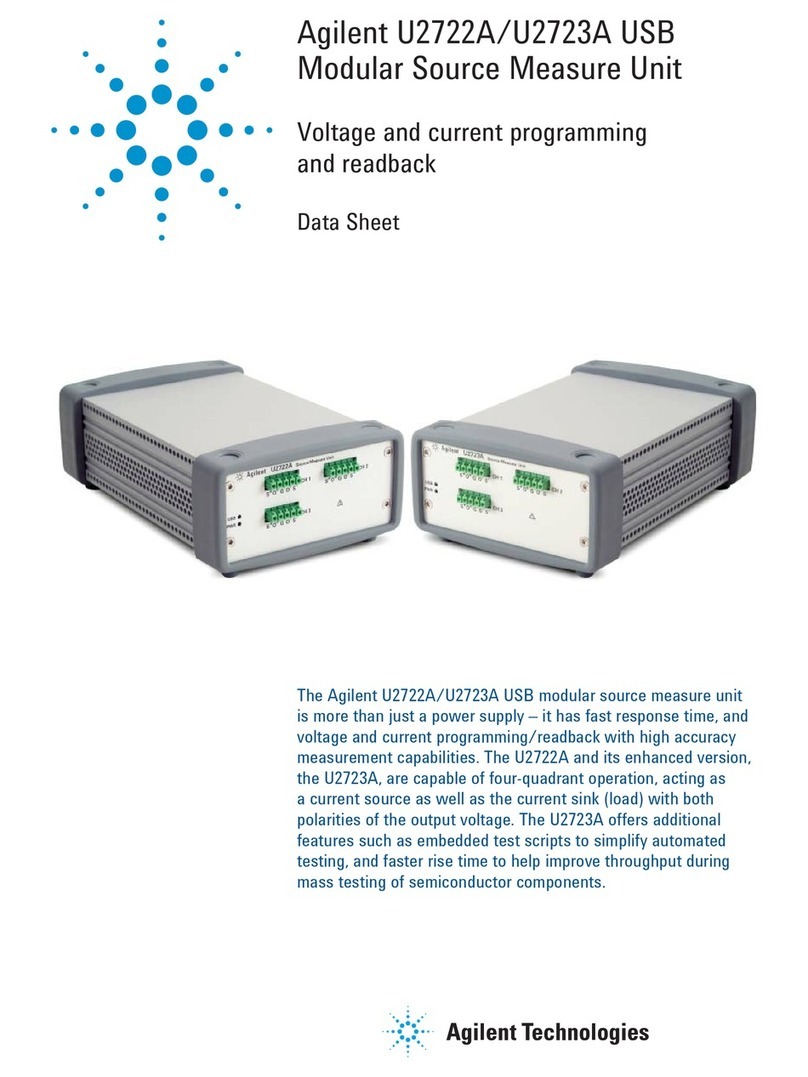
Agilent Technologies
Agilent Technologies U2722A datasheet
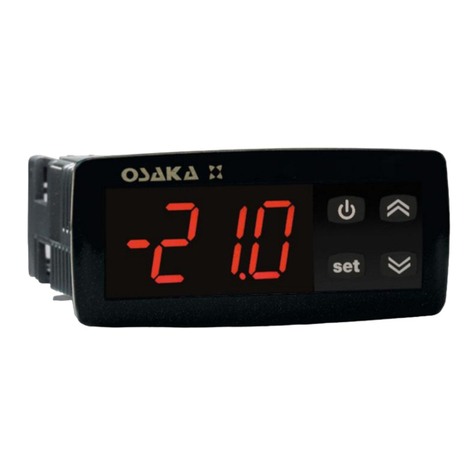
Osaka
Osaka OI 22-0 user manual
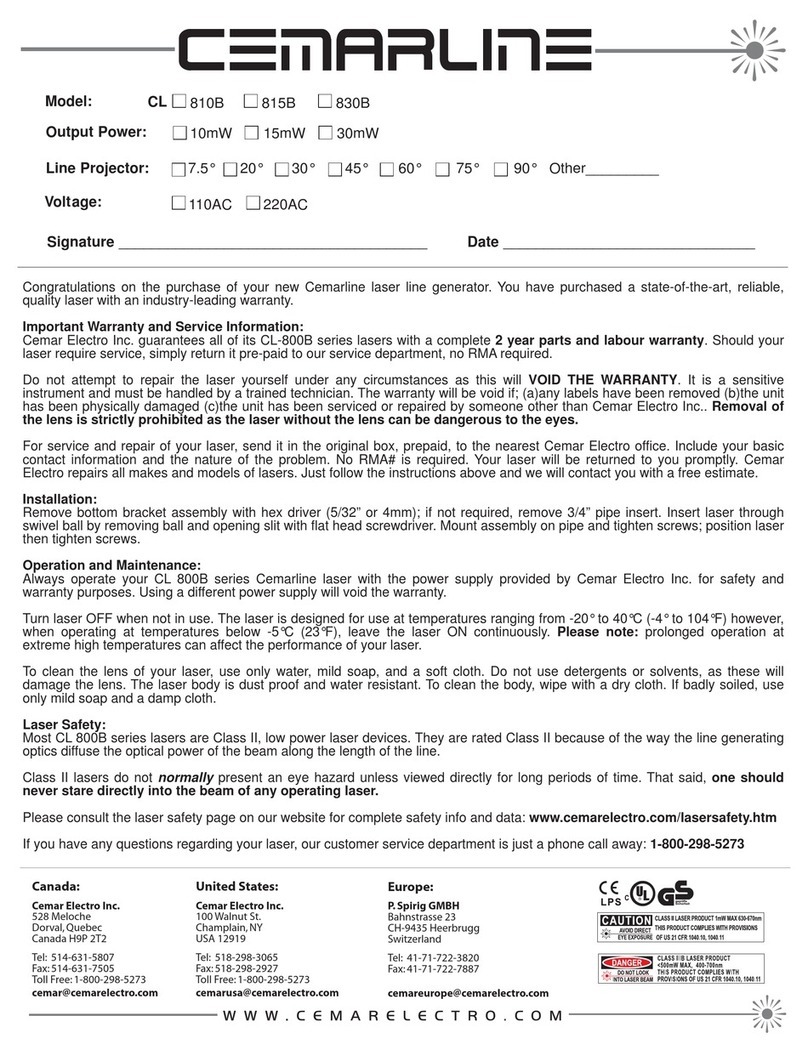
CEMARLINE
CEMARLINE CL 800-B Series quick start guide
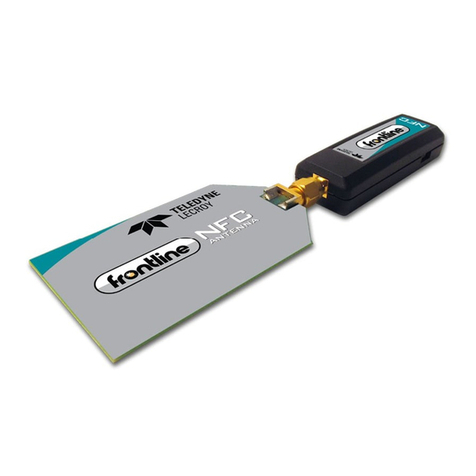
Teledyne Lecroy
Teledyne Lecroy Frontline NFC-F user manual
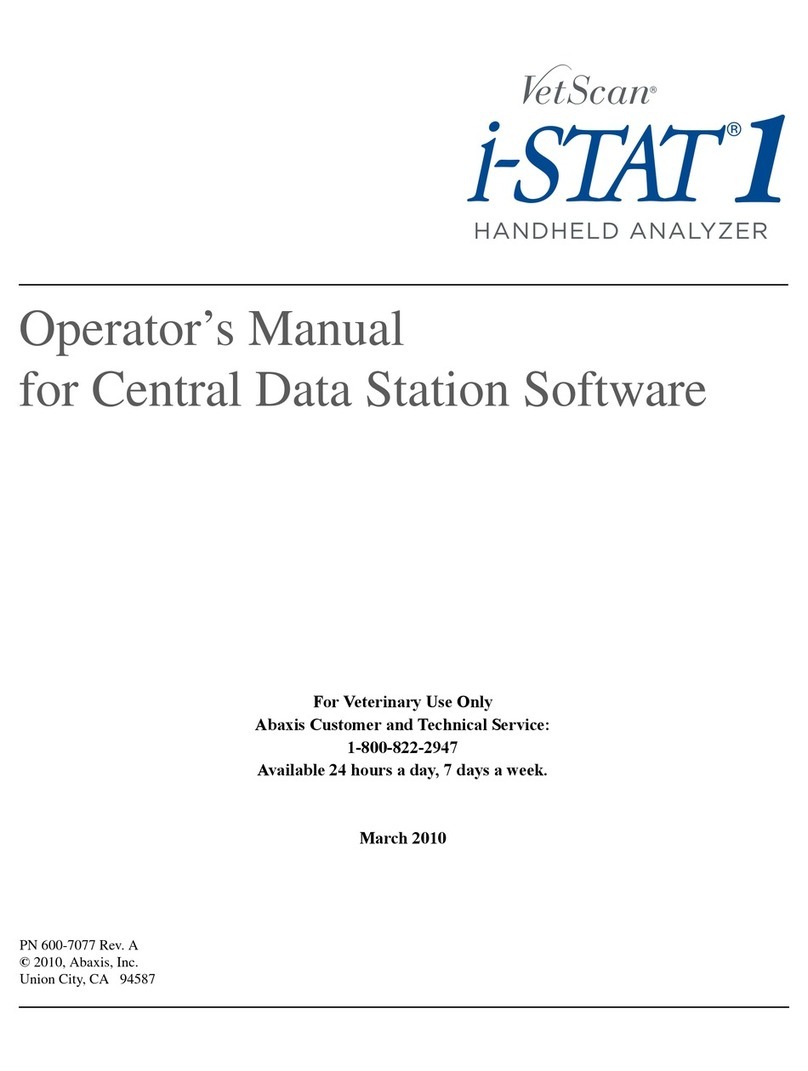
VetScan
VetScan i-STAT 1 Operator's manual
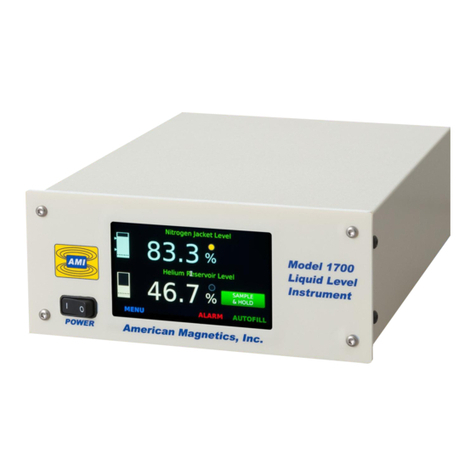
AMI
AMI 1700 Installation, operation and maintenance instructions

